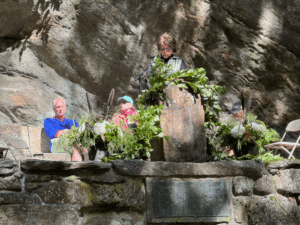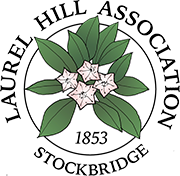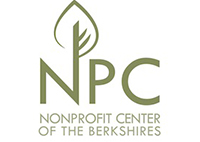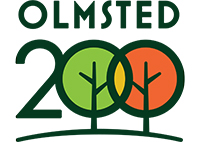Small Town, Big Vision

SMALL TOWN, BIG VISION
Stockbridge, MA | Saturday, August 30th
KEY NOTE SPEECH
By: Jacquelyn Harris
Good afternoon
Thank you, Hilary. It is such an honor to be here with all of you today and to speak at the 172nd Laurel Hill Day celebration. And I’d also like to thank everyone involved in this event, including all the Trustees and Friends of the Association. My speech today is called “Small Town, Big Vision.” This is an apt title for many reasons. Well over a century ago, the founder of the Laurel Hill Association, Mary Hopkins Goodrich, a daughter of the tiny village of Stockbridge, had a sweeping vision of improving what we often refer to today as the public realm. As a result of her foresight, the Laurel Hill Association became a model across the country. She demonstrated what ordinary people working together toward a common goal could do to enhance and beautify their immediate surroundings, and make them more resilient at the same time.
As a new Board member, I’d like to talk for a few minutes about the history of the Association. Of course, many of you are familiar with these events, but I myself am humbled to learn of those who stood here in this place, on the land of the Mohicans, to deliver an Anniversary Day speech. Some of the prominent speakers included Lyman Beecher Stowe; Booker T. Washington; the Reverend J. Slingerland; and many members of the Sedgwick family. As you know, this site is included within the Main Street Historic District on the National Register of Historic Places, and its deed acknowledges its “use, benefit and pleasure of the public, intending that the same be protected and preserved forever for that purpose.” This rostrum was dedicated as a memorial to Henry Dwight Sedgwick, president of the Association from 1881 to 1904. Sculptor Daniel Chester French of Lincoln Memorial fame and a summer resident of Stockbridge donated the design work; and fellow sculptor Augustus Lukeman, also a Stockbridge resident at one point, executed the plans. A Laurel Hill Trustee recently shared that some of Lukeman’s better-known works include the World War 1 Monument in Brooklyn’s Prospect Park, not far from my former home. Lukeman also had a prominent role in sculpting the Confederate Memorial in Stone Mountain, Georgia, which Dr. Martin Luther King Jr. referred to in his “I Have A Dream” speech.
Born and raised in Atlanta myself, I am very familiar with the deep symbolism evoked by that monument. As a child, I often heard from my parents about the cross burnings and Klan activities there. Even so, as Dr. King pointed out, resilience and hope can be experienced anywhere, even on a mountain of stone. I can’t help but find these historical connections worthy of deeper contemplation. I will certainly return to them in the snowy winter days ahead when I am no longer able to be out in the garden. All in all, it seems I was meant to be here in this unique town with you.
Many of Stockbridge’s iconic structures, magnificent view corridors and beautification projects grew from the far-reaching vision of Mary Hopkins Goodrich, and her determination to ensure that the place she loved so dearly would be a model for people throughout the Berkshires.
Mary Goodrich was a charismatic and compassionate leader with a flair for planning. As she rode through town on her white horse, she formulated her ideas about how to address the ills of the town, which she believed were considerable. The newly released book “Improving the Village: Stockbridge, Massachusetts, and the Laurel Hill Association by Kirin Makker and Sarah Allaback observes “Despite its reputation as one of the most beautiful villages of the Berkshires, by midcentury Stockbridge –around the 1850s– appears to have been in need of improvement. Main Street was poorly graded, pocked with pools of water in the spring and lined by gullies filled with garbage; walks were few and rarely repaired. The cemetery, partially enclosed by a battered wooden fence, offered little in the way of shade or seating for those who wished to linger. The beauty of Stockbridge had been marred by public use and lack of maintenance.” According to Margaret French Cresson’s book Laurel Hill: “She [Mary] realized she might be getting too ambitious; that perhaps her friends and neighbors might not see eye to eye with her in this novel upstart of a project; that they were all so busy, what with the children and the chores, that they hadn’t really noticed, hadn’t taken it in, what a miserable looking town Stockbridge really was. Perhaps this early neglect was a legacy from frontier psychology and the unlovely doctrine of Calvinism, which had for so long dominated New England, and had also discouraged any attempts at aesthetics. But Mary had a feeling that she could appeal to people’s pride, could cajole them, laugh at them and sass them; she could infect them with her own eagerness. There was plenty of industry here, plenty of ambition, plenty of vigilance, but it had to be led, to be channeled, to be shown the way.” This sounds like a very modern outlook, doesn’t it?
Based on my own engagement with land use issues in Stockbridge, I believe Mary’s legacy and tenacity, backed up by her can-do spirit, is alive and well, thanks to many of you present here today. So many of our fellow residents are making tremendous efforts to ensure that Stockbridge continues to embrace the small-town character and bucolic environment that is becoming so rare. This atmosphere is cherished by residents and visitors alike.
As Hilary mentioned in her introduction, I worked for many years as an urban planner in New York City, which was and is a big city with a big vision. But there are over-arching principles at play in both places. Some of the projects I worked on, reminded me of the design principles that Mary Hopkins Goodrich and her contemporaries in the Laurel Hill Association and community used to facilitate their goals. Many principles, which guide the New York City Planning Department even today, include enhancing people’s daily lives through good design to create a sense of belonging; caring for our community’s culture, history and identity, which reinforces neighborhood character and the environment; advancing progress; and confronting the challenges of the time, ensuring the protection of the community and instilling a sense of civic pride.
On the face of it, the communities I served in New York City couldn’t be more physically different than the town of Stockbridge. I refer specifically to the Oceanhill/Brownsville community in Brooklyn, where I worked as a neighborhood planner, and Manhattan’s South-Central Harlem community, when I was the Deputy Director of the Manhattan Office.
While Stockbridge has always been an environment of incredible natural beauty, these communities, particularly in the 1980s, suffered from the cycle of disinvestment, abandonment and demolition that plagued parts of the city for many years. Vacant land and buildings typified both areas. The neighborhood of South-Central Harlem, for example, which we studied in the ‘80s, had lost over a third of its population and approximately 40 percent of the property came into city ownership. Much of the portfolio of city-owned property ranged from small infill lots under 5,000 square feet to large assemblages which could take up almost an entire block. They were a prominent feature -or should I say eyesore- of the physical landscape. About 72 percent of the area we were studying at that time was predominantly mixed-use, containing both residential and commercial uses. There was a limited amount of lot area devoted to open space (under 2 percent). I wonder what Mary Hopkins Goodrich would have thought about that! Well, from what I’ve read of her energy and strong work ethic, I think she would have rolled up her sleeves and gotten to work as many neighborhood residents, elected officials, civic associations and members of the development community did in New York City over a century later.
One of the prominent neighborhood and city government initiatives in the 1980s involved art installations of painted colorful images of flower pots on boarded-up windows in abandoned buildings that enlivened one’s visual experience. “Green Thumb” community gardens also blossomed. These gardens, under Parks Department jurisdiction, “created hubs of neighborhood pride and provide a myriad of environmental, economic and social benefits to the neighborhoods in which they thrive. Green Thumb supports neighborhood volunteers who steward community gardens as active resources that strengthen communities.” Does this ring a bell when it comes to the approach and legacy of Mary Hopkins Goodrich? I think she would have been pleased to see that residents took action to improve their neighborhoods and create value right where they lived, which was and is something to be proud of. Although many of these community gardens have been lost to development pressures for sorely needed housing, many still remain as significant neighborhood open space resources. In Stockbridge, we all benefit from the work of the Laurel Hill Association and other like-minded town committees that protect our open space and environmental resources.
I was pleased to read a recent article in the Berkshire Eagle that acknowledges the need for even greater conservation efforts in the Berkshires to “build climate resilience, provide a connecting habitat for plants and animals and connect more people to nature”. As a matter of fact, there is an international movement afoot in which cities and towns that create a culture that values and prioritizes nature are rewarded. There is a big difference between thinking about Stockbridge as a town in a park, as opposed to a town with some parks in it. Mary Hopkins Goodrich was on the side of the former viewpoint, and we are benefitting from her vision today.
Street trees in Stockbridge were an important aspect of Mary Goodrich’s focus and Laurel Hill’s mission just as they are in New York City today. The first warrant prepared by the Association in 1853 read that [the people] “in the town of Stockbridge … have by agreement in writing, associated for the purpose of improving and ornamenting the streets and public squares of the town of Stockbridge, by planting and cultivating ornamental trees.” As cited in the Cresson book, which I’ve mentioned earlier, a former President of Laurel Hill, Herbert Lakin, said that Mary Hopkins Goodrich “… was a woman of vision. She realized that a little town like Stockbridge must have some outstanding virtue in order to attain distinction. She proposed to make it known for its neatness and its trees. Theoretically, that could be attained by the town government, but practically it required the active interest of the residents. In other words, she aspired to make the individual citizens conscious of their civic responsibilities and opportunities and realized that this aim could best be accomplished by cooperation … She made Stockbridge famous for its beauty.” Isn’t this a wonderful tribute? Trees were and continue to be an important element of this town’s health and beauty just as they are in many towns and cities today. A New York City Parks initiative in partnership with Bette Midler’s New York Restoration Project, supported by many civic-minded residents, has planted over a million street trees. This program has become renowned for urban settlements around the world. To think, it all began with the unique vision of Mary Hopkins Goodrich and the Laurel Hill Association, who were among the pioneers in this realm.
I myself had the good fortune for many years to work with one of the important champions of public space in New York City, Amanda Burden, who served as Chair of the New York City Planning Commission. She understood and believed that when you think about cities, you must think about the people that live in them. As we grappled with tough issues to accommodate the anticipated projected growth and where to direct that growth with respect to new housing of all types, she along with staff spent thousands of hours listening to people just to develop trust. Spending time with our fellow citizens also allowed us, as planners, to understand, as she put it, the DNA of each neighborhood.
Amanda understood the importance of infrastructure, particularly transit, and that it would play a major role in where to direct development. She fully understood that quality public spaces, whether they were city-owned, under the stewardship of not-for-profit organizations, or privately owned public spaces, attracted people from all over the city. She embraced the idea that being in open space allows each one of us to tap into our humanity and to think creatively.
No matter how popular a public space may be, including the highly successful elevated High Line on Manhattan’s west side–which I would recommend you all visit if you haven’t done so already–must not be taken for granted. She noted, as the visionary she proved to be, that public space has power and needs vigilant champions. I find it so profoundly respectworthy that many in the town of Stockbridge are supporting the importance of open space as we grapple with complex issues such as affordable housing and the declining school population.
Clearly the Laurel Hill Association, the oldest existing village improvement society in the United States has a special mission. Mary Hopkins Goodrich had a special mission. Each one of us has a special mission. As a new Board member, I too have a special mission to support the quality of life and environment reflected by the lands and natural features in the Town of Stockbridge and its villages. I look forward to engaging with fellow Trustee members and friends to increase sustainable activities, broaden our community outreach and increase our capacity to carry out our mission and vision.
On a hot August day over a century ago, Mary Goodrich called the community together and spoke of her vision of a clean, beautiful town. They dialogued about how they could work together to improve the public realm and our environment. As a result of her vision and the efforts of the many volunteers who have carried out her vision to this day, Stockbridge has become one of the jewels of the Berkshires. Let’s continue her mission as we advance together! Thank you so much for your long attention!







